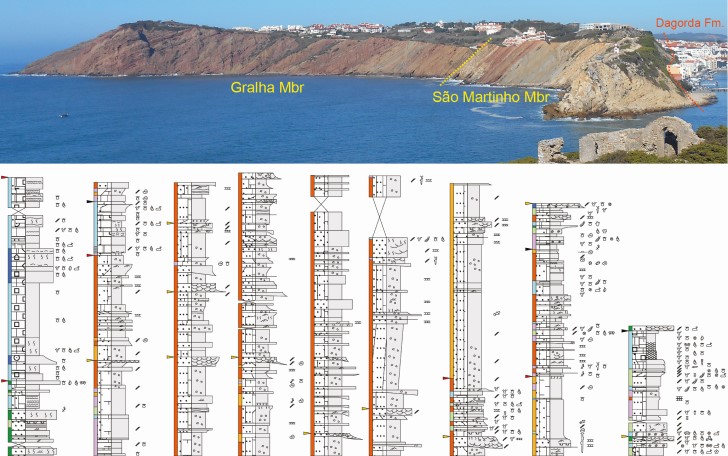Featured publication: Dynamic Late Jurassic environments in Portugal reconstructed
A study of palaeoenvironments represented by the Late Jurassic Alcobaça Formation in the Lusitanian Basin, central Portugal, conducted by researchers from Erlangen, Munich and CASP, has recently been published in Palaeobiodiversity and Palaeoenvironments.
More than 2.5 km of strata in nine outcrop sections of the Alcobaça Formation at the Portuguese coast and inland were logged, and in-depth analysis of their macrofaunal and microfaunal contents was performed. The studied sections are arranged along the flanks of a large passive salt diapir, which was emergent during deposition of the sediments in the Kimmeridgian. The interplay of climatic changes, sea-level fluctuations and salt tectonics is expressed by repeated small-scale palaeoenvironmental shifts along a fluvial-terrestrial to shallow marine gradient. Along with the detailed ecological characterisation, the Alcobaça Formation and its seven component members are formalised.

27 September 2021
